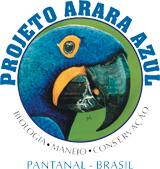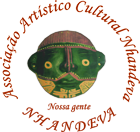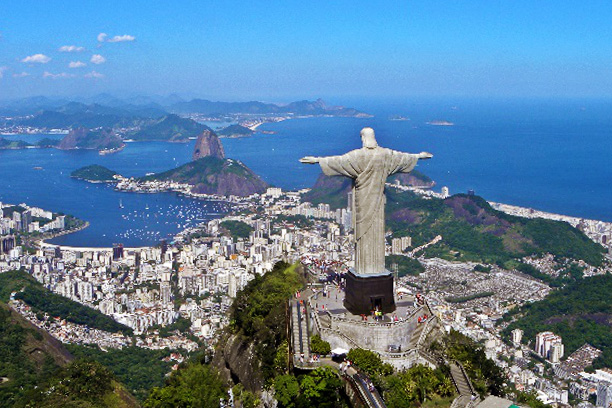Three large macaws from the Psitacidae family live in the Brazilian state of Mato Grosso do Sul. The largest of all parrots are the arara-azul-grande (Anodorhynchus hyacinthinus) measuring up to 105 cm and weighing 1.5 kg. It is also easily recognizable because of its beauty. The whole body is covered with cobalt blue feathers and the distinctive yellow markings around the eyes and the beak. The arara-vermelha-grande (Ara chloroptera) shows light green at the upper part of the wings between its predominant red feathers and some light blue at the wings and tail tip. It measures some 90 cm. Third biggest is the arara-canindé or arara-de-barriga-amarela (Ara ararauna) with up to 80 cm. It might be mistaken for the arara-azul, but features a light blue at back, wings and tail, and yellow feathers at the belly and the lower parts of wings and tail.
Camelô – Street hawkers in Rio de Janeiro is a social film project and a co-production of the Federal University of the State of Rio de Janeiro (Universidade Federal Fluminense), one of the most prestigious institutes in this particular field in Latin America, and the German University of Applied Sciences and Design of Mannheim.
The film of Benjamin Hemer shows the work, the everyday life and fight for survival of the ten thousands of street hawkers of Rio de Janeiro. Economic restructuring and privatization measures after the end of the military dictatorship, especially in the 90s, caused a significant shrinking of the labor market with many workers being laid off. As a consequence the only alternative for them was informal employment.
The perfect combination of a voyage to Brazil links the exuberant nature of the tropics and sub tropics with cultural aspects from the past and the present.
Southern Cross Tours & Expeditions directly supports Nhandeva and the handcrafted production of award-winning basketry by the members of the Guaraní Mbya tribe in the village of Araponga, near Paraty.
Ecotrópica – the Foundation Aid for Life in the Tropics – is a non-governmental organization without financial interests for the protection of the environment in the Tropics and was established in Cuiabá (Mato Grosso) in 1989. Our mission is to give a contribution to the conservation of the natural resources and to maintain the quality of life in the tropical ecosystems. In the last years, we concentrated on the protection of the Pantanal wetlands in the Brazilian state of Mato Grosso, motivated by our understanding of the vulnerability of this extraordinary ecosystem with it's fantastic biodiversity, being the habitat of the biggest wildlife concentration in the neo-tropics. In the mid-nineties we started one of our most important actions: the protection of the biodiversity in the National Park Pantanal Mato-Grossense.
We purchased the farms of Acurizal, Penha and Estância Dorochê – an area about 60,000 ha – and transformed them in RPPNs (Particular Nature Protection Areas). These areas are now associated with the National Park and happens to be one of the most important wetland protection zones of the planet and give living space, shelter and alimentation to many animal species, some of them elsewhere threatened by extinction.
For our Brazil Highlights Tour we have chosen four of our favourite parts of the country with the highlights: The tropical metropolis Rio de Janeiro, colonial Paraty, the Amazon rainforest, and beach Paradise and scuba-diving hotspot Arraial do Cabo.





